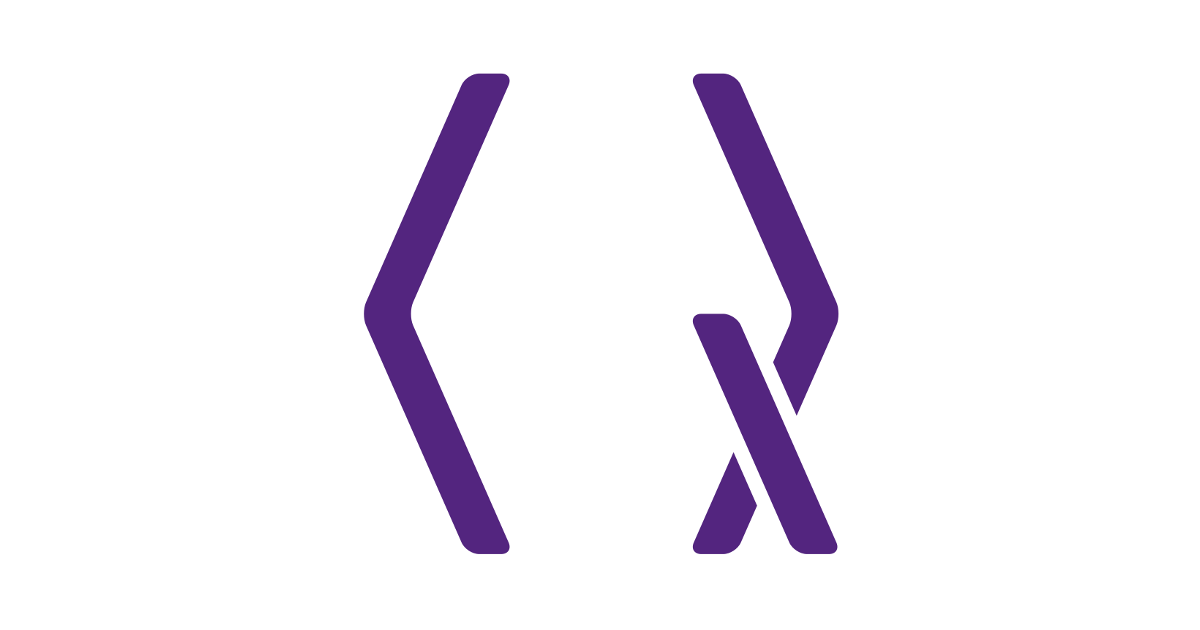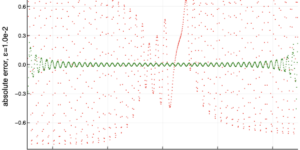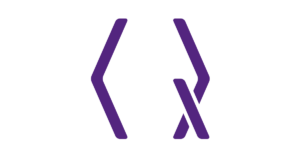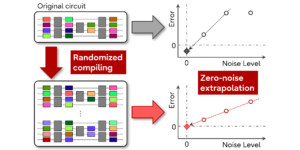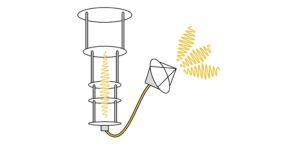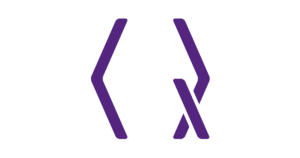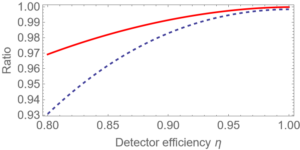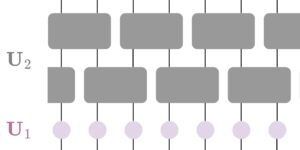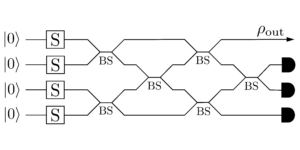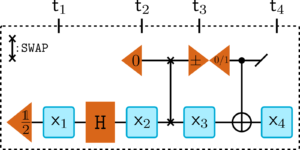1Institute of Physics, Faculty of Physics, Astronomy and Informatics, Nicolaus Copernicus University, Grudziadzka 5/7, 87-100 Toruń, Poland
2Institut für Theoretische Physik, Technische Universität Dresden, D-01062, Dresden, Germany
3Turku Center for Quantum Physics, Department of Physics and Astronomy, University of Turku, FI-20014, Turun Yliopisto, Finland
4Dipartimento di Fisica “Aldo Pontremoli”, Università degli Studi di Milano, Via Celoria 16, I-20133 Milan, Italy
5Istituto Nazionale di Fisica Nucleare, Sezione di Milano, Via Celoria 16, I-20133 Milan, Italy
Find this paper interesting or want to discuss? Scite or leave a comment on SciRate.
Abstract
Every open-system dynamics can be associated to infinitely many stochastic pictures, called unravelings, which have proved to be extremely useful in several contexts, both from the conceptual and the practical point of view. Here, focusing on quantum-jump unravelings, we demonstrate that there exists inherent freedom in how to assign the terms of the underlying master equation to the deterministic and jump parts of the stochastic description, which leads to a number of qualitatively different unravelings. As relevant examples, we show that a fixed basis of post-jump states can be selected under some definite conditions, or that the deterministic evolution can be set by a chosen time-independent non-Hermitian Hamiltonian, even in the presence of external driving. Our approach relies on the definition of rate operators, whose positivity equips each unraveling with a continuous-measurement scheme and is related to a long known but so far not widely used property to classify quantum dynamics, known as dissipativity. Starting from formal mathematical concepts, our results allow us to get fundamental insights into open quantum system dynamics and to enrich their numerical simulations.
► BibTeX data
► References
[1] H.-P. Breuer and F. Petruccione, The Theory of Open Quantum Systems (Oxford Univ. Press, Oxford, 2007).
https://doi.org/10.1093/acprof:oso/9780199213900.001.0001
[2] H.J. Carmichael,An Open System Approach to Quantum Optics, Lectures Notes in Physics (Springer, Berlin, 1993).
https://doi.org/10.1007/978-3-540-47620-7
[3] J. Dalibard, Y. Castin, and K. Mølmer, Phys. Rev. Lett. 68, 580 (1992).
https://doi.org/10.1103/PhysRevLett.68.580
[4] T. Basche, S. Kummer, and C. Brauchle, Nature 373, 132 (1995).
https://doi.org/10.1038/373132a0
[5] S. Peil and G. Gabrielse, Phys. Rev. Lett. 83, 1287 (1999).
https://doi.org/10.1103/PhysRevLett.83.1287
[6] F. Jelezko, I. Popa, A. Gruber, C. Tietz, J. Wrachtrup, A. Nizovtsev, and S. Kilin, Appl. Phys. Lett. 81, 2160 (2002).
https://doi.org/10.1063/1.1507838
[7] S. Gleyzes, S. Kuhr, C. Guerlin, J. Bernu, S. Deléglise, U.B. Hoff, M. Brune, J.-M. Raimond, and S. Haroche, Nature 446, 297 (2007).
https://doi.org/10.1038/nature05589
[8] R. Vijay, D. H. Slichter, and I. Siddiqi, Phys. Rev. Lett. 106, 110502 (2011).
https://doi.org/10.1103/PhysRevLett.106.110502
[9] Z. K. Minev, S. O. Mundhada, S. Shankar, P. Reinhold, R. Gutiérrez-Jáuregui, R.J. Schoelkopf, M. Mirrahimi, H. J. Carmichael, and M.H. Devoret, Nature 570, 200 (2019).
https://doi.org/10.1038/s41586-019-1287-z
[10] M. B. Plenio and P. L. Knight, Rev. Mod. Phys. 70, 101 (1998).
https://doi.org/10.1103/RevModPhys.70.101
[11] A.J. Daley, Adv. Phys. 63, 77 (2014).
https://doi.org/10.1080/00018732.2014.933502
[12] I.Percival, Quantum State Diffusion (Cambridge University Press, Cambridge, England, 2002).
[13] A. Barchielli and M. Gregoratti, Quantum Trajectories and Measurements in Continuous Time: The Diffusive Case, Lecture Notes in Physics 782 (Springer, Berlin, 2009).
https://doi.org/10.1007/978-3-642-01298-3
[14] H.M. Wiseman and G.J. Milburn, Phys. Rev. A 47, 1652 (1993).
https://doi.org/10.1103/PhysRevA.47.1652
[15] W. T. Strunz, L. Diósi, and N. Gisin, Phys. Rev. Lett. 82, 1801 (1999).
https://doi.org/10.1103/PhysRevLett.82.1801
[16] T. Yu, L. Diósi, N. Gisin, and W. T. Strunz, Phys. Rev. A 60, 91 (1999).
https://doi.org/10.1103/PhysRevA.60.91
[17] K. Luoma, W.T. Strunz, and J. Piilo, Phys. Rev. Lett. 125, 150403 (2020).
https://doi.org/10.1103/PhysRevLett.125.150403
[18] K. W. Murch, S. J. Weber, C. Macklin, and I. Siddiqi, Nature 502, 211 (2013).
https://doi.org/10.1038/nature12539
[19] P. Campagne-Ibarcq, P. Six, L. Bretheau, A. Sarlette, M. Mirrahimi, P. Rouchon, and B. Huard, Phys. Rev. X 6, 011002 (2016).
https://doi.org/10.1103/PhysRevX.6.011002
[20] S. Hacohen-Gourgy, L.S. Martin, E. Flurin, V.V. Ramasesh, K.B. Whaley, and I. Siddiqi, Nature 538, 491 (2016).
https://doi.org/10.1038/nature19762
[21] Q. Ficheux, S. Jezouin, Z. Leghtas, and B. Huard, Nat. Comm. 9, 1926 (2018).
https://doi.org/10.1038/s41467-018-04372-9
[22] A. Barchielli and V.P. Belavkin, J. Phys. A: Math. Gen. 24, 1495 (1991).
https://doi.org/10.1088/0305-4470/24/7/022
[23] E.-M. Laine, J. Piilo, and H.-P. Breuer, Phys. Rev. A 81, 062115 (2010).
https://doi.org/10.1103/PhysRevA.81.062115
[24] D. Chrusciński, A. Kossakowski, and Á. Rivas, Phys. Rev. A 83, 052128 (2011).
https://doi.org/10.1103/PhysRevA.83.052128
[25] Á. Rivas and S. F. Huelga, Open Quantum Systems (Springer, New York, 2012).
https://doi.org/10.1007/978-3-642-23354-8
[26] Á. Rivas, S. F. Huelga, and M. B. Plenio, Phys. Rev. Lett. 105, 050403 (2010).
https://doi.org/10.1103/PhysRevLett.105.050403
[27] Á. Rivas, S. F. Huelga, and M. B. Plenio, Rep. Prog. Phys. 77, 094001 (2014).
https://doi.org/10.1088/0034-4885/77/9/094001
[28] H.-P. Breuer, E.-M. Laine, and J. Piilo, Phys. Rev. Lett. 103, 210401 (2009).
https://doi.org/10.1103/PhysRevLett.103.210401
[29] H.-P. Breuer, E.-M. Laine, J. Piilo, and B. Vacchini, Rev. Mod. Phys. 88, 021002 (2016).
https://doi.org/10.1103/RevModPhys.88.021002
[30] J. Piilo, S. Maniscalco, K. Härkönen, and K.A. Suominen, Phys. Rev. Lett. 100, 180402 (2008).
https://doi.org/10.1103/PhysRevLett.100.180402
[31] J. Piilo, K. Härkönen, S. Maniscalco, and K.A. Suominen, Phys. Rev. A 79, 062112 (2009).
https://doi.org/10.1103/PhysRevA.79.062112
[32] J. Gambetta and H.M. Wiseman, Phys. Rev. A 68, 062104 (2003).
https://doi.org/10.1103/PhysRevA.68.062104
[33] L. Diósi, Phys. Rev. Lett. 100, 080401 (2008).
https://doi.org/10.1103/PhysRevLett.100.080401
[34] H.M. Wiseman and J.M. Gambetta, Phys. Rev. Lett. 101, 140401 (2008).
https://doi.org/10.1103/PhysRevLett.101.140401
[35] A. Smirne, M. Caiaffa, and J. Piilo, Phys. Rev. Lett. 124, 190402 (2020).
https://doi.org/10.1103/PhysRevLett.124.190402
[36] L. Diósi, Phys. Lett. A 112, 288 (1985).
https://doi.org/10.1016/0375-9601(85)90342-1
[37] L. Diósi, Phys. Lett. A 114, 451 (1986).
https://doi.org/10.1016/0375-9601(86)90692-4
[38] L. Diósi, J. Phys. A 21, 2885 (1988).
https://doi.org/10.1088/0305-4470/21/13/013
[39] N. Gisin, Helv. Phys. Acta 63, 929 (1990).
https://doi.org/10.5169/seals-116244
[40] B. Vacchini, A. Smirne, E.-M. Laine, J. Piilo, H.P. Breuer, New J. Phys. 13, 093004 (2011).
https://doi.org/10.1088/1367-2630/13/9/093004
[41] D. Chruściński and S. Maniscalco, Phys. Rev. Lett. 112, 120404 (2014).
https://doi.org/10.1103/PhysRevLett.112.120404
[42] S. Wißmann, H.-P. Breuer, B. Vacchini, Phys. Rev. A 92, 042108 (2015).
https://doi.org/10.1103/PhysRevA.92.042108
[43] H. M. Wiseman and G. J. Milburn, Quantum Measurement and Control (CUP, Cambridge, 2010).
https://doi.org/10.1017/CBO9780511813948
[44] J. Zhangab, Y.-X. Liu, R.-B. Wuab, K. Jacobs, and F. Nori, Phys. Rep. 679, 1 (2017).
https://doi.org/10.1016/j.physrep.2017.02.003
[45] S. Hacohen-Gourgy, L. P. Garcìa-Pintos, L.S. Martin, J. Dressel, and I. Siddiqi, Phys. Rev. Lett. 120, 020505 (2018).
https://doi.org/10.1103/PhysRevLett.120.020505
[46] L.S. Martin, W.P. Livingston, S. Hacohen-Gourgy, H.M. Wiseman and I. Siddiqi, Nat. Phys. 16, 1046 (2020).
https://doi.org/10.1038/s41567-020-0939-0
[47] L. Magrini, P. Rosenzweig, C. Bach, A. Deutschmann-Olek, S.G. Hofer, S. Hong, N. Kiesel, A. Kugi, and M. Aspelmeyer, Nature 595, 373 (2021).
https://doi.org/10.1038/s41586-021-03602-3
[48] G. Lindblad, Comm. Math. Phys. 48, 119 (1976).
https://doi.org/10.1007/BF01608499
[49] V. Gorini, A. Kossakowski, and E.C.G. Sudarshan, J. Math. Phys. 17, 821 (1976).
https://doi.org/10.1063/1.522979
[50] D. Chrusciński, and A. Kossakowski, Phys. Rev. Lett. 104, 070406 (2010).
https://doi.org/10.1103/PhysRevLett.104.070406
[51] M. Caiaffa, A. Smirne, and A. Bassi, Phys. Rev. A 95, 062101 (2017).
https://doi.org/10.1103/PhysRevA.95.062101
[52] T.A. Brun, Phys. Rev. A 61, 042107 (2000).
https://doi.org/10.1103/PhysRevA.61.042107
[53] T.A. Brun, Am. J. Phys. 70, 719 (2002).
https://doi.org/10.1119/1.1475328
[54] L. Diósi, J.Phys. A 50, 16LT01 (2017).
https://doi.org/10.1088/1751-8121/aa6263
[55] M.J.W. Hall, J.D. Cresser, L. Li, and E. Andersson, Phys. Rev. A 89, 042120 (2014).
https://doi.org/10.1103/PhysRevA.89.042120
[56] D. Chruściński and F.A. Wudarski, Phys. Rev. A 91, 012104 (2015).
https://doi.org/10.1103/PhysRevA.91.012104
[57] N. Megier, D. Chruscinski, J. Piilo, and W.T. Strunz, Sci. Rep. 7, 6379 (2017).
https://doi.org/10.1038/s41598-017-06059-5
[58] T. Heinosaari and M. Ziman, The Mathematical Language of Quantum Theory, (Cambridge University Press, Cambridge, 2012).
https://doi.org/10.1017/CBO9781139031103
[59] H.M. Wiseman, Quantum Semiclass. Opt. 8, 205 (1996).
https://doi.org/10.1088/1355-5111/8/1/015
[60] V. Paulsen, Completely Bounded Maps and Operator Algebras (Cambridge University Press, Cambridge, 2003).
https://doi.org/10.1017/CBO9780511546631
[61] E. Størmer, Positive Linear Maps of Operator Algebras, Springer Monographs in Mathematics (Springer, New York, 2013).
https://doi.org/10.1007/978-3-642-34369-8
[62] K. Mølmer and Y. Castin, Quantum Semiclass. Opt. 8, 49 (1996).
https://doi.org/10.1088/1355-5111/8/1/007
[63] D. Chruściński and F. Mukhamedov, Phys. Rev. A. 100, 052120 (2019).
https://doi.org/10.1103/PhysRevA.100.052120
[64] M. Naghiloo, M. Abbasi, Yogesh N. Joglekar, and K. W. Murch, Nat. Phys. 15, 1232 (2019).
https://doi.org/10.1038/s41567-019-0652-z
[65] F. Minganti, A. Miranowicz, R. W. Chhajlany, and F. Nori, Phys. Rev. A 100, 062131 (2019).
https://doi.org/10.1103/PhysRevA.100.062131
[66] F. Minganti, A. Miranowicz, R. W. Chhajlany, I. I. Arkhipov, and F. Nori, Phys. Rev. A 101, 062112 (2020).
https://doi.org/10.1103/PhysRevA.101.062112
[67] Y. Ashida, Z. Gong, and M. Ueda, Adv. Phys. 69, 3 (2020).
https://doi.org/10.1080/00018732.2021.1876991
[68] W. Chen, M. Abbasi, Y. N. Joglekar, and K. W. Murch, Phys. Rev. Lett. 127, 140504 (2021).
https://doi.org/10.1103/PhysRevLett.127.140504
[69] F. Roccati, G.M. Palma, F. Bagarello, and F. Ciccarello Op. Syst. Inf. Dyn. 29, 2250004 (2022).
https://doi.org/10.1142/S1230161222500044
Cited by
[1] Dariusz Chruściński, “Dynamical maps beyond Markovian regime”, arXiv:2209.14902.
The above citations are from SAO/NASA ADS (last updated successfully 2022-10-15 02:31:03). The list may be incomplete as not all publishers provide suitable and complete citation data.
On Crossref’s cited-by service no data on citing works was found (last attempt 2022-10-15 02:31:01).
This Paper is published in Quantum under the Creative Commons Attribution 4.0 International (CC BY 4.0) license. Copyright remains with the original copyright holders such as the authors or their institutions.

